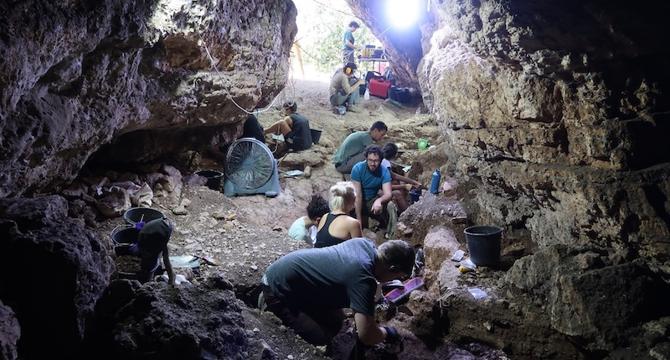Earthsky
4w
254

Image Credit: Earthsky
New evidence: humans and Neanderthals interacted in Israel
- Excavations at Tinshemet Cave in Israel reveal evidence of interaction between early modern humans and Neanderthals, showcasing shared cultural and technological practices.
- The findings include stone tools, animal bones, ochre, and intentional human burials, indicating a connection between the two human species.
- Researchers suggest that modern humans and Neanderthals co-existed and exchanged common practices in the Levant around 100,000 years ago.
- The study, published in Nature Human Behavior, highlights the significance of population interactions in driving cultural and technological developments in history.
- Archaeological evidence from Tinshemet Cave and other Levant sites supports the idea of human connections and behavioral uniformity in the Middle Paleolithic period.
- Discoveries of stone tools, animal bones, ochre use, and intentional burials point towards symbolic thought and social complexity among early humans.
- The presence of ochre, a clay pigment used in cultural practices, suggests the cultural exchange and symbolic behavior between modern humans and Neanderthals.
- Formal burial customs observed at Tinshemet Cave around 100,000 years ago indicate increased social interactions and potential belief systems among early human populations.
- The archaeological findings at Tinshemet Cave provide valuable insights into the dynamic interactions and cultural exchanges between modern humans and Neanderthals in the Levant.
- This study underscores the shared history and cooperation between different Homo groups, shedding light on the development of common behavioral practices in the region.
Read Full Article
15 Likes
For uninterrupted reading, download the app